If your website is using both the WordPress and HubSpot platforms, you may be asking yourself, should I move my blog from WordPress to HubSpot? What implications does this have? After moving a client's blog last month from WordPress to HubSpot I decided it was finally time to report my findings for the advantages and disadvantages.
Pros Of Moving To HubSpot
Use HubSpot To Send Automatic Blog Updates
This is a feature we at ProFromGo really love. After you’ve moved over your blog to HubSpot you can set up an email template that will automatically send out a recap of your blog each month to members of any list. You can even get more detailed and create lists based on your personas and only send blog posts labeled under certain “Topics”. This is a simple and efficient way to keep your readers engaged if you're regularly blogging.
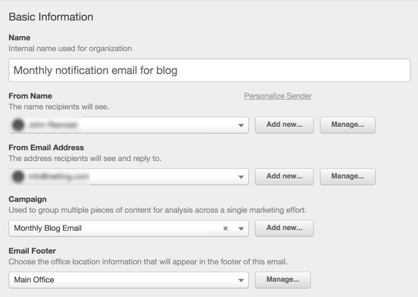
Easily Integrate Your Forms, Fields & CTAs
If you plan on heavily using HubSpot features such as Calls To Action, Fields and Forms on your blog, then you should highly consider moving your posts to the HubSpot platform. This will allow your blog to “communicate” better with the rest of the HubSpot software.
What do I mean by this?
Let’s say for instance you take HubSpot’s advice and want to add Calls To Action and Forms to each of your blog posts for your important content offers. While you can embed these on WordPress websites, you’re going to have to manually update the embed code each time you make a design change or add/remove a field from a form.
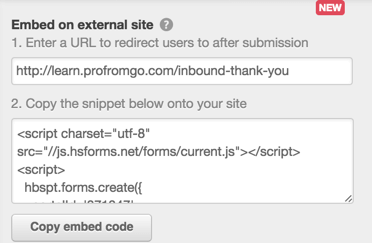
While this may not sound like a big deal, it can get to be a pretty big hassle if you’re making a lot of changes or testing these different things. By integrating the blog with the rest of HubSpot, these CTAs, Forms and Fields don’t have to updated each time a change is made to one of them. This saves you time and eliminates human error of forgetting to update the WordPress embed code.
Track Your Blog Views & Subscribers
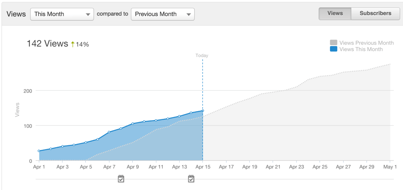
I really like HubSpot’s blog analytics because their simple and easy to understand While I know that you can use other tools such as Google Analytics (which I use for heavier analysis) these analytics provide you a great snapshot of how your blog is performing.
Plus, these analytics are easy for clients to understand if they’re not ready to dissect a Google Analytics report. The fact that it also measures your blog subscribers is really the cherry on top.
Cons Of Moving To HubSpot
Moving Your Blog To A Subdomain Could Be Risky
If you’re using a site that’s on both WordPress and the HubSpot platforms (like ours), there’s a good chance that the HubSpot portion of your website is hosted on a subdomain. Transferring the blog over would mean moving all of that content to your HubSpot subdomain.
However, in the inbound marketing community there’s a great debate on whether or not moving your content to a subdomain is harmful to your website traffic. While Matt Cutts, Head of Google’s Webspam Team, swears moving your content to a subdomain will make absolutely ZERO difference (and this was back in 2012) some industry experts are a little less certain. Rand Fishkin of Moz fame claims that moving your content to a subdomain can be risky and lead to a potential loss of traffic.
Whatever the case may be, it is clear that there is some risk of moving your WordPress blog over to a separate HubSpot subdomain towards your SEO.
You Cannot Control Exact Title Tag & Meta Data Of Blog Posts
Inbound marketers know that title tags are the lifeblood of on-page SEO. It’s important to be able to tweak your title tag to match the keywords you are targeting in each post. While HubSpot will automatically give each blog post a title tag, it does not allow you edit it yourself. Instead, it will simply make the title tag exact whatever the “Title” of your blog post is.
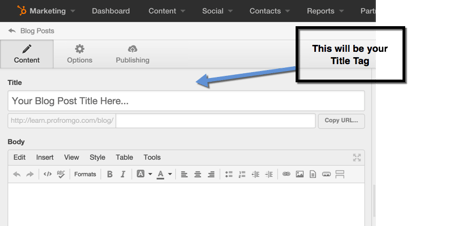
With WordPress, you can download awesome SEO plugins such as the Yoast WordPress SEO Plugin. Using this plugin you can really dive way deeper into the metadata of each post and can control every single character of the title tag and more.
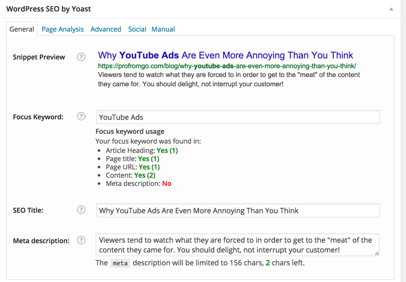
HubSpot Creates Duplicate Blog Author Pages
Another, albeit smaller, gripe I have with moving blogs to HubSpot is that there is no way for you to Noindex blog author pages. This means that URLs like “/blog/author/page/1/” & “/blog/author/page/2/” will be indexed and crawled by the search engines.
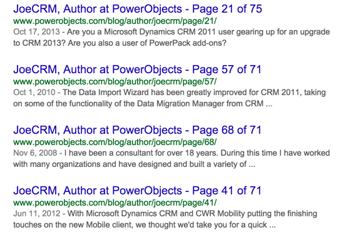
This will create duplicate pages on your website and can mess up your crawl reporting with third party tools. After speaking with a HubSpot representative, currently there is no known fix for this, but they are working on one.
UPDATE: As of 4/24/15, HubSpot has reached to me stating that they have fixed this problem. Their representative said this:
"Hi Chris,
....
Our dev team has just pushed out a fix to prevent author pages from being indexed as duplicate content. Please let me know if you have any further questions."
TL;DR
Basically what it boils down to is whether or not you plan on using a lot of the HubSpot features on your blog (which I assume you would if you're paying for HubSpot). Here is a quick summary of the pros and cons:
Pros
- Automate monthly (also daily or weekly) automated blog recap emails
- Have your blog fully integrated with all of your HubSpot CTAs, Forms & Fields
- Simple blog analytics for you and clients
Cons
- Moving the blog to another subdomain may cause in a loss of traffic and rankings for the blog
- The HubSpot blog does not give you control of metadata that certain WordPress plugins can give you
- Author pages will not be no-indexed and can lead to duplicate content and faulty crawl reporting
If you have any questions or need consulting on moving your blog to HubSpot, please feel free to contact us at any point in time.




